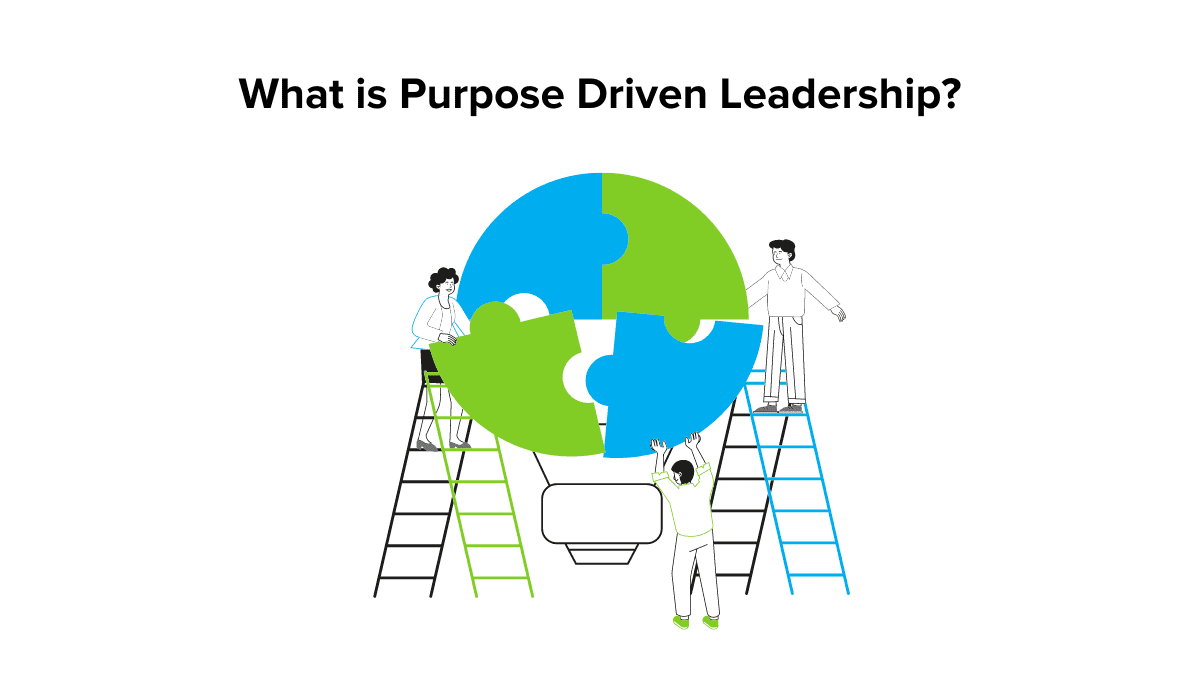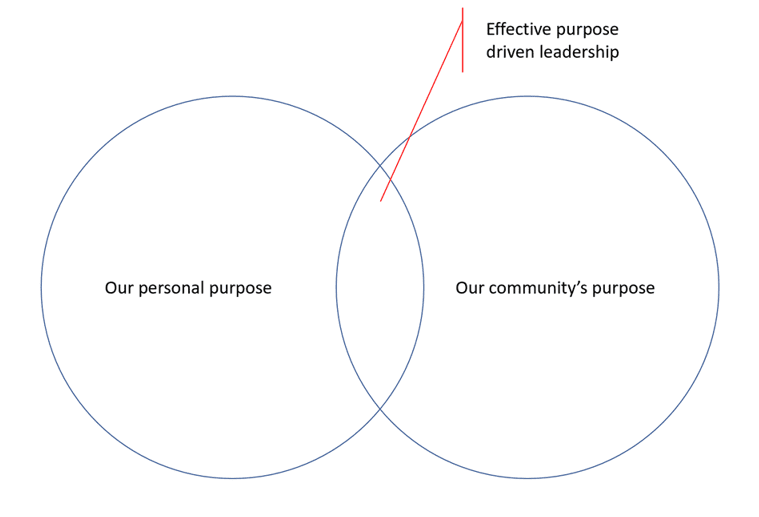The concept of ‘purpose driven leadership’ is one that has grown in importance over the past few years, accelerated in part by the global disruption that is Covid. From young people who are seeking greater purpose in the places they work through to established executives reflecting on the leadership impact they’d like to create, it’s a concept that is increasingly shaping the way we think about what we do.
However, notions around ‘purpose’ and ‘leadership purpose’ have also become quite buzzy, so in this article, let’s spend a bit of time dissecting what ‘purpose driven leadership’ means. Let’s break down the definition, why it’s important, and what it is you can do to reflect on your own leadership purpose.
I should caveat that this is an article very firmly rooted in the realm of philosophy, meaning the aim is not to tell you what is right or wrong, but to share a perspective for you to consider and reflect on.
What is the purpose of ‘leadership’?
Before we get into ‘purpose driven leadership’, it’s important to consider what the purpose of leadership itself is. It should come as no surprise that multiple interpretations can exist; what is perceived as effective leadership will depend heavily on the context in which leadership is required. For example, during a crisis, a ‘command and control’ type of leadership is often considered the most effective. Within the context of community leadership – the domain of Leadership Victoria – the activity of leadership involves bringing different people together and engaging them to make progress on key issues relevant to that community.
It’s important to frame the activity of leadership this way because it allows us to consider ‘purpose driven leadership’ as a subset of overall leadership activity. That is, before you think about what it means to be a purpose driven leader, it’s important to possess an understanding of the context in which leadership is required. At minimum, this means an understanding of the community you serve – which applies equally to a work or a social community – and the issues or outcomes that the community seeks to address.
How then should we define ‘purpose’?
Like leadership, ‘purpose’ is a concept that has been explored and debated across many different disciplines, from Simon Sinek to Ariana Huffington. There are functional interpretations (i.e. the purpose of a door lock is to… well… lock doors) through to more social interpretations (i.e. the purpose of a door lock is to provide people with a sense of security).
Within the context of community leadership, I’m going to lean on the following description: Purpose is an overarching aim or goal towards which activities can be directed.
The benefits of having a clear purpose almost goes without saying; a clear purpose provides everyone with a consistent sense of direction, it helps create focus and an understanding of how activities are prioritised, and it serves as a source of motivation for the collective.
Conversely, think of any group or team you’ve been a part of where the purpose is unclear. Things move slowly (if at all), people don’t understand how their work contributes to a larger goal, and the perceived lack of purpose can be debilitating and demoralising.
What is ‘Purpose Driven Leadership’?
Bringing these two concepts together, it thus follows that a purpose driven leader is one who demonstrates leadership behaviours that bring people together in a way that drives progress towards a common purpose.
At this point, some of you may be wondering why I haven’t mentioned anything about social impact, corporate social responsibility, or United Nations Sustainable Development Goals (UNSDGs). All of these themes are commonly associated with notions of purpose or being purpose driven but the reason I haven’t touched on them yet is because I think there’s an important distinction to make between your personal purpose and that of a community or organisation.
It can be all too easy to get caught up in the idea of ‘finding your purpose’ and using that as a basis for leadership. However the challenge this can present is that our personal purpose may not always be compatible or appropriate for the community we service. As an example, consider any situation where you have seen a leader join a community and begin to work towards their own goals in a way that is contrary to the group’s.
Equally, if we’re unclear about your personal purpose, we may find ourselves adopting the purpose of our community or organisation as our own. To be clear, this isn’t necessarily a bad thing but the risk is that as a leader, we can lose our own sense of purpose and identity. Not only can we ‘lose our way’, we may become less effective leaders and the community can stagnate as a result. This is why some communities change their leaders over time, bringing in different people with different ideas and perspectives that can breathe new life into a community.
I posit that if we are clear about our personal purpose and we have a deep understanding of the communities we serve and its collective purpose, finding overlap between the two is where we achieve effective purpose driven leadership.
The purpose driven leadership ‘equation’
Looking at purpose driven leadership through this equation gives us some interesting insights on how to become a purpose driven leader.
The first part of the equation is understanding our own personal purpose, as distinct from the various communities and organisations we will serve over our lifetime. What is it we want to achieve? What leadership impact do we want to create? What drives and nourishes us as individuals? What values as a leader are important to us?
Preserving space around our personal purpose also gives us space to evolve and adapt over time, as we embrace new experiences or our personal situations change. As we become clearer about our personal leadership purpose, it helps us understand how we can show up to serve others in different capacities.
The second part of the equation is understanding the purpose of the communities or organisations we serve. What are their needs? What unique challenges do they face? What outcomes are they working towards? And how has this changed or evolved over time? This is where the aforementioned outcomes such as corporate social responsibility, social impact, or contributing towards the UNSDGs come into play.
By keeping the community’s purpose at arm’s length, it allows us to better engage the people around us, to really listen to their stories, and better understand motivations and aspirations. Or for those familiar with adaptive leadership principles, it allows us to ‘get on the balcony’ and to better diagnose the problem more objectively.
How to become an effective purpose driven leader?
When we look at both parts of this equation clearly, we can start to ask ourselves some really interesting questions:
- If I had to write it down, what is my leadership statement of purpose?
- Is there a clear overlap between my leadership purpose and the community’s purpose?
- How long does this overlap last for?
- Is there a time when my purpose is achieved for this community?
- Is there a time where the community no longer needs my purpose?
- Are there other communities that align to my leadership purpose?
- Do I need to adjust or evolve my purpose in order to serve this community better?
- And finally, by understanding both sides of the equation: Can I articulate what my leadership purpose is for the community I currently serve?
Answering these questions honestly is good both for ourselves and all the various communities we serve, and helps us become more effective purpose driven leaders.
In conclusion
Purpose driven leadership is a powerful and effective way to lead, both for ourselves and the communities we serve. By understanding our own personal purpose, as distinct from the collective purpose of our community or organisation, we can become more effective as purpose driven leaders.
As we round out the year, it’s a great opportunity to take some time for reflection, and to determine how we can best show up for a meaningful 2023.
If you’re seeking to cultivate your personal sense of leadership purpose, check out Leadership Victoria’s range of programs here, or simply reach out to me if you’d like to continue the conversation.
Thanks for reading!




